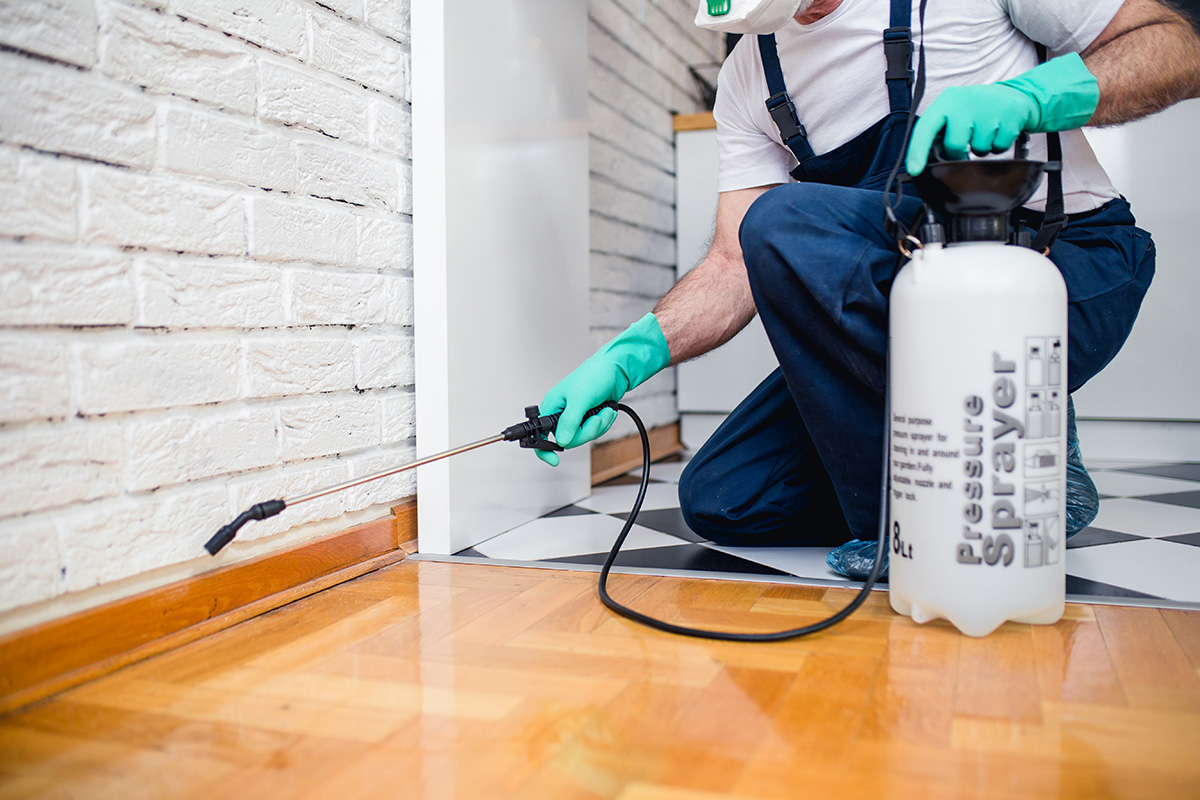Bed Bug Therapy Break Down: Contrasting Chemical Vs. Non-Chemical Solutions
In the world of pest control, especially when taking care of the consistent problem of bed pests, the selection between chemical and non-chemical therapy solutions can be a critical one. Both strategies supply unique benefits and downsides, influencing aspects such as performance, security factors to consider, and total price. By examining the nuanced information of each approach, a more clear understanding of which course to seek in dealing with a bed insect problem can be acquired.
Performance of Chemical Therapies
Chemical treatments for bed pest problems have been commonly recognized for their potent and quick efficacy in eliminating these insects. When taking into consideration the performance of chemical treatments, it is crucial to understand that they can provide a quick and extensive solution to a bed pest issue. Specialist pest control specialists typically depend on insecticides to target bed bugs at numerous stages of their life cycle, consisting of eggs, grownups, and nymphs. These chemicals commonly function by interrupting the bed bugs' nerves, causing paralysis and ultimate death.
Moreover, chemical therapies have the advantage of providing residual impacts, implying that they can proceed to eliminate bed pests also after the initial application. This residual activity is especially helpful in combating any possible re-infestations. Additionally, the fast action of chemical therapies can bring relief to people encountering severe bed pest invasions, permitting them to regain control of their space quickly.
Safety Interest In Chemical Solutions
One vital element that requires careful factor to consider when utilizing chemical remedies for bed bug therapy is making certain the safety of owners and the atmosphere. Direct exposure to certain chemicals used in bed pest treatments can lead to respiratory problems, skin inflammation, or various other damaging reactions, specifically in people with pre-existing problems or level of sensitivities.
Additionally, the ecological influence of chemical remedies is one more considerable factor to consider. Some pesticides made use of in bed insect therapies may be unsafe to helpful insects, wild animals, and environments if they seep right into the dirt or water supply. It is vital to make use of chemical treatments carefully, following safety and security standards, and considering much less hazardous options to minimize these dangers and make certain the secure and reliable administration of bed pest problems.
Benefits of Non-Chemical Methods
Thinking about the potential safety and security problems and environmental effect connected with chemical solutions for bed insect treatment, discovering non-chemical techniques presents an encouraging option with several distinctive benefits. Non-chemical therapies are environmentally pleasant, as they do not contribute to air or water air pollution, making them a sustainable selection for pest control.
In addition, non-chemical services can be reliable in targeting bed insects, consisting of hard-to-reach areas where chemical therapies might not permeate. Approaches such as warm therapy, vacuuming, steam cleansing, and mattress coverings provide complete removal without the usage of damaging chemicals. Moreover, non-chemical strategies can be less turbulent, requiring very little prep work and allowing for quicker reentry right into dealt with areas. Generally, choosing non-chemical bed insect treatment methods not just focuses on safety and environmental management yet also makes sure extensive and effective bug control.
Limitations of Non-Chemical Treatments

Furthermore, non-chemical treatments commonly call for multiple applications to achieve effective removal. This can be lengthy and might not constantly guarantee complete removal of all bed bugs and their eggs, particularly in hard-to-reach or concealed areas.
Moreover, the success of non-chemical therapies greatly depends on proper application and thoroughness, which can be testing for individuals without expert competence. Insufficient application of non-chemical approaches might result in incomplete removal, causing consistent invasions and the demand for added therapies.
Therefore, while non-chemical treatments have their benefits, it is important to recognize these constraints and consider them when figuring out one of the most efficient strategy for taking care of bed bug problems.
Cost Contrast: Chemical Vs. Non-Chemical Options
Given the limitations related to non-chemical therapies, an important aspect to assess in the context of bed insect administration is the cost contrast in between chemical and non-chemical choices. Chemical treatments typically entail the application of pesticides by experts, which can range from $250 to $900 per room, depending upon the seriousness of the infestation and the dimension of the area to be dealt with. On the other hand, non-chemical therapies like warmth therapy or heavy steam can be much more expensive, with prices varying from $1,000 to $6,000 for an entire home. While the preliminary cost of chemical therapies might seem lower, several signs of termites treatments might be needed to fully eradicate the infestation, potentially boosting the overall price. On the other hand, non-chemical choices may give a much more lasting and environmentally friendly solution, although they can be cost-prohibitive for some people. Ultimately, when considering the expense of bed pest treatment alternatives, it is essential to consider the in advance expenditures versus the performance and lasting sustainability of the selected approach.
Verdict

Considering the possible safety worries and ecological impact connected with chemical options for bed pest therapy, exploring non-chemical techniques offers an encouraging alternative with several distinctive advantages.Offered the limitations linked with non-chemical therapies, a necessary facet to assess in the context of bed insect administration is the expense comparison in between chemical and non-chemical alternatives. In comparison, non-chemical therapies like warmth therapy or heavy steam can be extra expensive, with costs ranging from $1,000 to $6,000 for an entire home. While the initial cost of chemical therapies might seem lower, several treatments may be required to totally eradicate the infestation, potentially raising the general expense.In final thought, when comparing chemical and non-chemical bed insect treatment alternatives, it is necessary to take find more into consideration efficiency, security, benefits, restrictions, and expense.
Comments on “A1 Bed Bug Exterminator Charlotte - Specialized Bed Bug Elimination”